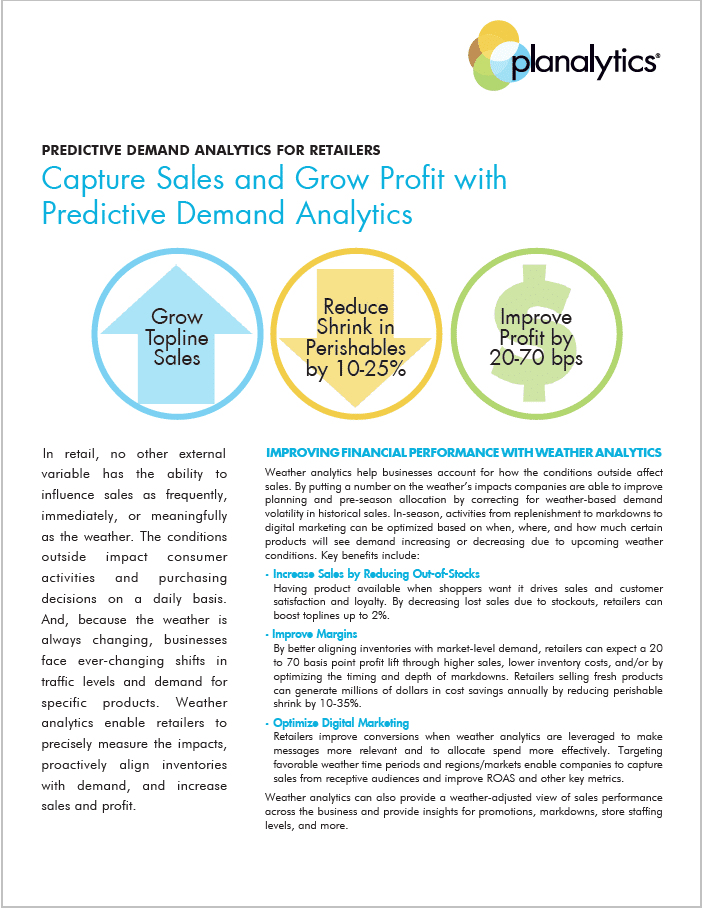
Retailers carrying a wide range of products face a wide range of shifting demand trends. The factors that influence what shoppers put in their carts – foods and beverages, personal care items, apparel and accessories, home goods, outdoor products – all vary daily and differently across store locations or markets. Planalytics’ predictive demand analytics for retail help businesses precisely measure and proactively manage the weather’s never-ending impact on operations and performance. Day-to-day changes in the weather have a direct influence on the number of customer visits and the demand for specific products. Typically, retailers will find that sales will shift 3% to 5% throughout the year due to the weather, with even more sensitivity seen during certain times of the year and across different locations. At the product level, a retailer’s more weather-sensitive categories deal with great sales variability. Some examples: 33% (of annual sales) for fans, 11% for shorts, 15% for suncare products, 16% for pool toys, and 27% for electric blankets. (Note that the above examples are industry metrics. Planalytics also provides specific weather impact models based on retailer-specific sales data, locations, store types or channels, etc.) Department stores, discounters, and other mass merchants can integrate predictive Weather-Driven DemandSM (WDDSM) analytics into existing processes and technology solutions to grow profit margins through increased sales and lower costs.
For more details, we invite you to request a financial benefit estimate for your business.
Additional Insights
|

NRF White Paper: Climate-Proofing Retail
|
||||||||||||










